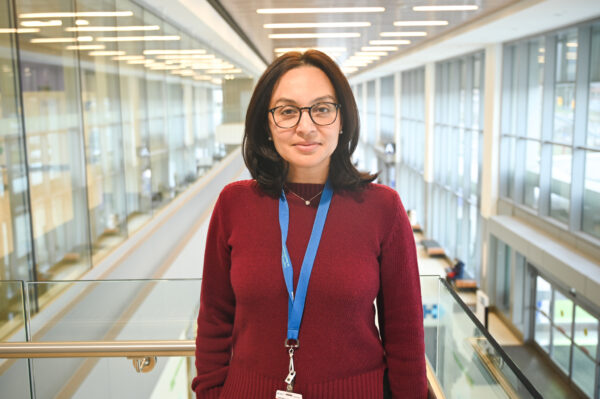“Doing” vs. “Being” with Dr. Gurpreet Mand
04
Jan
2024
Dr. Gurpreet Mand is a Family Physician and the Faculty Development Lead for the Schulich Family Medicine Teaching Unit at Humber River Health. Dr. Mand has recently published an article entitled “Identifying the exceptional learner in medical education: A doing vs. being framework,” and has provided insight into her inspirations, conceptualizations, and discoveries in writing the piece.

What inspired to write your recently published article, “Identifying the exceptional learner in medical education: A doing vs. being framework”?
This article was inspired by an educational question – our team wanted to better understand what we knew about high performing learners in medical education and how we could best teach them. When this work begun pre-pandemic, a few of us were wondering how we could best support these learners. A literature search at the time yielded very little information. As a result, we decided to investigate this further and were lucky enough to be supported by an Art of the Possible Grant through the Department of Family and Community Medicine at the University of Toronto. For me, the inspiration was really the excellent residents that I have taught over the years.
Can you describe the concept of “Doing” vs. “Being”?
In medical education, there is a well-known concept called Miller’s Pyramid, which describes the growth of a learner along a continuum with “Knows” being at the bottom and “Does” being at the top. In 2016, Cruess and colleagues published an article that amended Miller’s Pyramid wherein they added “Is” at the top reflecting the development of Professional Identity as a physician.
We felt that the characteristics of the high performing learner that were highlighted in our study fell into either category at the top of the pyramid and could be considered either a “Doing” or “Being” characteristic.
Our team defined “Doing” as a demonstrable characteristic that can be observed or measured in the learner, and “Being” as a pre-existing characteristic or set of values or attitudes that the learner may possess from the start of training or before they came to us. Using this background, and the data from our study, we developed a novel framework of characteristics that faculty can use to identify exceptional learners.
Were there any surprising discoveries or challenges you encountered during your research?
Yes! I was quite surprised about how little there was in the literature about this subset of learners and how their teachers should support them. In terms of challenges, this work was completed during the pandemic so it naturally took a lot longer due to increased clinical demands. In addition, there was a lot of personal learning for me, as I am a community physician doing this for the first time. I was lucky to have had such a supportive and amazing team of researchers working with me who provided their guidance along the way.
What impact do you foresee your findings having on medical education and healthcare systems?
Our team hopes that the framework allows teachers to be able to identify these learners early on so that they can be supported and nurtured. There has been much published on how difficult it is to recruit healthcare leaders; we hope that by identifying and nurturing these learners early in their educational journey, they will be able to become ideal candidates for healthcare leadership in various sectors.
Are there plans for further research to expand upon these findings?
The team is working on a “Twelve Tips” article on how faculty can teach and support these learners once they have identified them. We hope that this will support faculty and faculty developers everywhere so that both learners and teachers can have a more positive teaching and learning experience.
